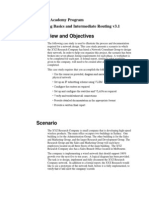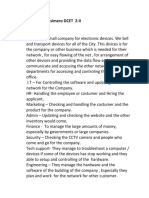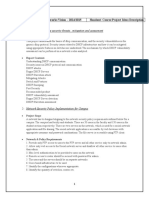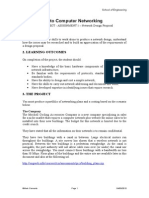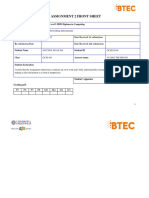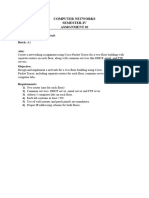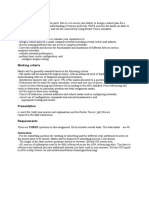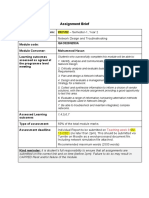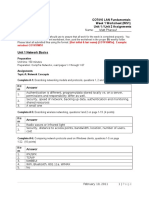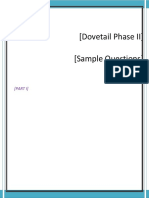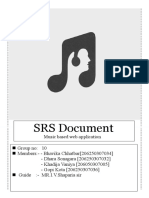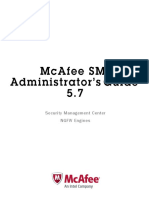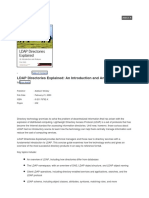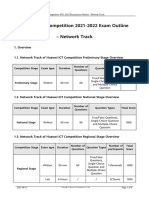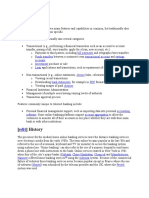0% found this document useful (0 votes)
162 views10 pagesIntroduction To Computer Networking: University of Greenwich School of Engineering
This document describes a networking project for students to design, implement, and document a computer network. The project involves subnetting an IP address range, configuring routers with RIP routing, and adding access control lists for security. Students must simulate the network design in Packet Tracer, document the router configurations, and produce a general narrative and spreadsheets to document the completed network design. The goal is to develop networking skills and produce clear technical documentation.
Uploaded by
Dinuka DalpathadoCopyright
© Attribution Non-Commercial (BY-NC)
We take content rights seriously. If you suspect this is your content, claim it here.
Available Formats
Download as DOCX, PDF, TXT or read online on Scribd
0% found this document useful (0 votes)
162 views10 pagesIntroduction To Computer Networking: University of Greenwich School of Engineering
This document describes a networking project for students to design, implement, and document a computer network. The project involves subnetting an IP address range, configuring routers with RIP routing, and adding access control lists for security. Students must simulate the network design in Packet Tracer, document the router configurations, and produce a general narrative and spreadsheets to document the completed network design. The goal is to develop networking skills and produce clear technical documentation.
Uploaded by
Dinuka DalpathadoCopyright
© Attribution Non-Commercial (BY-NC)
We take content rights seriously. If you suspect this is your content, claim it here.
Available Formats
Download as DOCX, PDF, TXT or read online on Scribd
/ 10







